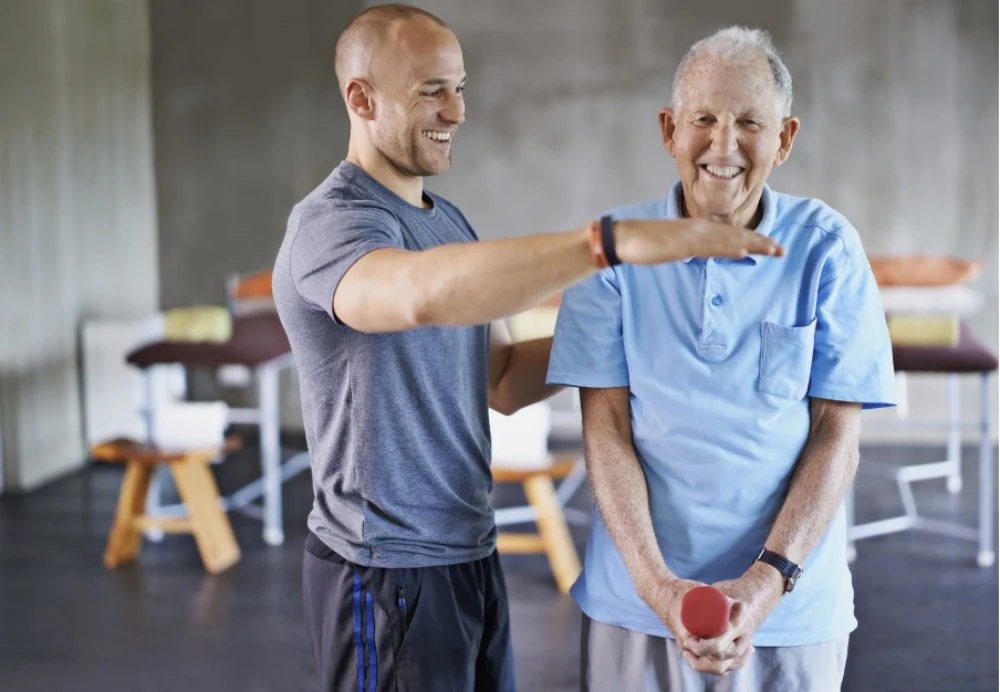Parkinson’s disease (PD) is a neurological condition that worsens over time and mostly impacts motor function. Motor symptoms such as bradykinesia (slowness of movement), stiffness, tremors, and postural instability are what define it. In addition, the lives of people affected are profoundly impacted by non-motor symptoms such as mood disorders, sleep disruptions, and cognitive impairment. Physiotherapy is essential for controlling Parkinson’s disease symptoms and enhancing patients’ quality of life, even though there is no known treatment for the condition. This article examines the use of Vancouver Physiotherapy for parkinson’s disease, emphasizing the therapeutic approaches and their advantages.

Understanding Parkinson’s Disease
Numerous motor and non-motor symptoms can be indicative of Parkinson’s disease. Involuntary tremors, rigidity in the muscles, bradykinesia, slowness of movement, postural instability, or problems with balance and coordination, are examples of motor symptoms. The non-motor symptoms, which can be as incapacitating, include problems with cognition, emotional disturbances including worry and depression, and problems with sleep.
The way these symptoms worsen over time may have a significant effect on everyday activities and general quality of life. To properly treat these symptoms and preserve as much freedom as possible, early intervention through physiotherapy is imperative. Physiotherapy helps people with Parkinson’s disease manage their daily struggles by treating both motor and non-motor symptoms.
physical therapy for autoimmune diseases
The Role of Physiotherapy in Parkinson’s Disease
The goal of physiotherapy for Parkinson’s patients is to enhance a variety of physical functions and well-being characteristics. The major objectives of parkinson’s disease physiotherapy treatment are to maintain independence in daily tasks, improve balance and coordination, and increase mobility and flexibility. Physiotherapists use a variety of therapies based on the unique requirements of each patient. Exercise regimens, gait training, balancing drills, strength training, and stretching exercises are a few examples of these therapies.
Common Physiotherapy Techniques for Parkinson’s Disease
Some techniques are used in treating Parkinson’s disease. They include:
- Exercises for the Aerobics
workouts that increase heart health and improve motor symptoms in Parkinson’s disease patients are aerobic workouts. Walking, cycling, and swimming are examples of exercises that not only increase physical fitness but also mood and cognitive performance. Better general mobility and endurance can result from regular aerobic exercise.

- Resistance Exercise
Strengthening muscles with resistance training helps to counteract the bradykinesia and rigidity that come with Parkinson’s disease. This can involve using resistance bands or lifting weights. Muscle building assists with posture and increases one’s capacity for efficient daily work.
- Exercises for Flexibility
Exercises for flexibility are essential for increasing range of motion and lowering muscle stiffness. Stretching exercises and yoga assist preserve joint mobility and lower the incidence of falls-related injuries.
· Training in Balance and Coordination
Training in balance and coordination is crucial to reducing the risk of falls, which are common among Parkinson’s patients. Balance board exercises and tai chi are good ways to improve your coordination and stability. Patients who receive this instruction report feeling less afraid of falling and feeling more confident in their actions.
- Training of the Gait
Enhancing walking patterns and minimizing shuffling, a common gait abnormality in Parkinson’s patients, are the main goals of gait training. To enhance overall walking ability and safety, techniques may involve the use of visual and auditory cues to encourage more regular and controlled steps.
Parkinson’s disease involves motor and non-motor symptoms, requiring early physiotherapy intervention for treatment and independence. Common techniques include aerobic, resistance, flexibility, and gait training.
Innovative Physiotherapy Approaches
Some modern approaches are used in physiotherapy for parkinson’s disease including:
- Technology-Aided Rehabilitation
Technological innovations have brought new perspectives to physiotherapy. Parkinson’s patients can exercise on interactive and entertaining platforms thanks to virtual reality and gaming. Wearable technology can track and improve performance while providing immediate encouragement and feedback.
- Hydrotherapy
Exercise in the water, or hydrotherapy, has several advantages, particularly for people with tight joints and muscles. Exercises can be performed with greater freedom and reduced pain because of the buoyancy of water, which lessens the strain on joints. Flexibility and mobility can be greatly increased with this kind of treatment.
- Movement Therapy and Dancing
The efficacy of dance therapy in enhancing motor abilities and fostering social connection has garnered attention. Dancing is beneficial for improving motor function overall, rhythm, and coordination. Research backs up the advantages of dance therapy as a method of physiotherapy for parkinson’s disease, demonstrating gains in both physical and emotional aspects.

· Personalized Physiotherapy Plan
There are various steps involved in developing a successful physiotherapy program for Parkinson’s patients. First, the patient’s physical and functional status is thoroughly assessed by the physiotherapist. Realistic goals are developed based on this evaluation, taking into account each person’s unique needs. To ensure ongoing efficacy, the treatment plan incorporates a variety of physiotherapy modalities and is modified as the condition worsens.
· Education
An essential part of physiotherapy is education. Exercises that may be done at home are taught to patients and caregivers, allowing for ongoing improvement outside of clinical appointments. Engaging caregivers in the therapeutic process guarantees that they can offer the required encouragement and support.
leg pain physiotherapy treatment
Benefits of Physiotherapy for Parkinson’s Disease
Physiotherapy for parkinson’s disease provides some benefits including:
- Physical Advantages
Numerous health advantages of physiotherapy include increased strength, flexibility, and balance. Patients can maintain greater levels of independence in their everyday lives to improve mobility and decrease the risk of falls.
- Benefits for the Mind
Moreover, physiotherapy is beneficial to mental wellness. Frequent exercise improves mood and reduces anxiety and depressive symptoms. Better self-esteem and self-sufficiency are factors in an overall higher standard of living.
- Social Advantages
Patients can socialize and form support networks with one another during group treatment sessions and interactive exercises. This social component of physiotherapy can be very helpful in overcoming the feelings of loneliness and isolation that people with Parkinson’s disease frequently experience.
Physiotherapy for parkinson’s disease utilizes innovative methods like technology-aided rehabilitation, hydrotherapy, and personalized plans, providing physical, mental, and social benefits while addressing ongoing evaluation and education needs.
Challenges and Considerations of Parkinson’s Physiotherapy
Parkinson’s patients may find it difficult to receive physiotherapy due to several obstacles. The inability to pay for frequent therapy sessions may result from financial limitations. Furthermore, the number of physiotherapists with specific training in treating Parkinson’s disease may be restricted.
Patients should look for local resources and support organizations that provide help and information about reasonably priced physiotherapy treatments to get past these obstacles. Programs for online and at-home physical therapy can also offer beneficial substitutes for individuals who are unable to attend in-person sessions.

Conclusion
With its many physical, mental, and social advantages, physiotherapy is an essential part of controlling Parkinson’s disease. Physiotherapists assist patients in maintaining their independence and improving their quality of life through a variety of methods and individualized treatment plans. To effectively manage Parkinson’s disease symptoms, patients and caregivers should investigate physiotherapy choices and seek professional assistance. Further developments in physiotherapy methods could lead to even better outcomes for Parkinson’s patients in terms of treatment and quality of life.
For more information about physiotherapy, Vancouver Massage Therapy , acupuncture and chiropractic, visit the Radial website.
Physiotherapy for Parkinson’s Disease in West Vancouver Clinic
For patients with Parkinson’s disease, the West Vancouver Clinic provides specialized physiotherapy with an emphasis on individualized treatment regimens that take care of both motor and non-motor symptoms. The complete initial examinations, customized fitness plans, and cutting-edge methods like hydrotherapy and technology-assisted therapy are all part of the clinic’s approach. A variety of therapies that target psychological and social well-being in addition to enhancing mobility, strength, and balance are beneficial to patients. To provide the best possible care for Parkinson’s patients and improve their quality of life overall, our experienced practitioners work closely with patients and caregivers. Call us today to set an appointment with our practitioners.